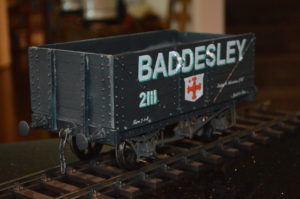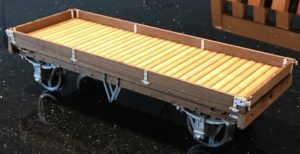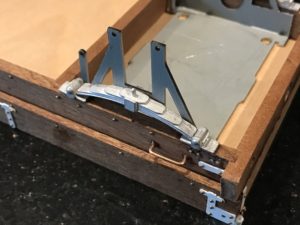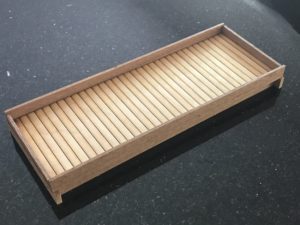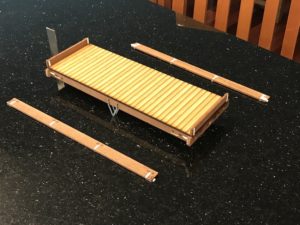First the Other Wagon: this is in fact a Railway Clearing House 1923 coal wagon, and the main reasons for making this particular kit are firstly that it’s inexpensive, and also that these wagons can be colourful, and can be made in a design that is compatible with my favourite locomotive – an industrial Garratt 0-4-0+0-4-0, not that it is very likely that I will ever be able to make one in Gauge 3 [but see my previous entries about the one which I made in ScaleSeven (1:43.5 scale)].
 The difficulty was that no-one makes suitable transfers for the Baddesley Colliery. However in due course and with a lot of help from friends new and old I have been able to have suitable transfers made (!) – see http://www.westernthunder.co.uk/index.php?threads/baddesley-transfers.8434/
The difficulty was that no-one makes suitable transfers for the Baddesley Colliery. However in due course and with a lot of help from friends new and old I have been able to have suitable transfers made (!) – see http://www.westernthunder.co.uk/index.php?threads/baddesley-transfers.8434/
Here is the wagon as my model stands: it isn’t finished quite yet, but the colourful design on the black background is seen to advantage, I think.
My other wagon-building project at present is the D336 flat wagon. This has progressed also.
I have had a little trouble with this, because I couldn’t see what the loops attached to the W-irons (the metal supports for the axle boxes) were for, and so {thinking they were for use on a different model sharing the same undergear} I cut them off !
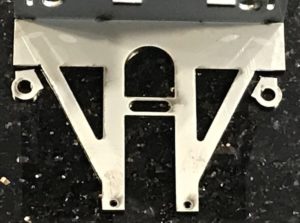 This was partly because the pictures I have of D336 real wagons don’t show anything like the loops on the W-irons.
This was partly because the pictures I have of D336 real wagons don’t show anything like the loops on the W-irons.
It turned out to be a mistake, as the whitemetal moulded representation of leaf springs were supposed to fit into the holes. However this didn’t matter – the leaf springs could be glued onto the sole bars perfectly satisfactorily.
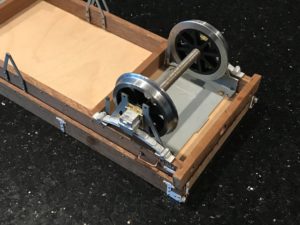 This shows the underneath of the wagon, with the W-irons, the leaf-springs, axle boxes and wheels in place,
This shows the underneath of the wagon, with the W-irons, the leaf-springs, axle boxes and wheels in place,

